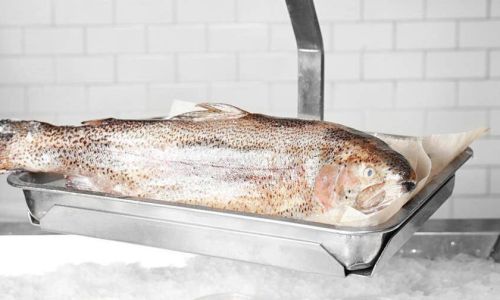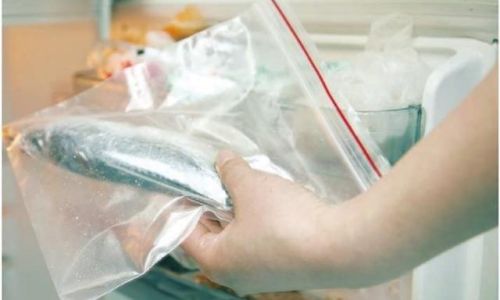Fish, a cornerstone of global diets, is prized for its nutritional value, delicate flavor, and versatility. However, its perishability demands careful handling to ensure safety and quality. For home cooks, fishmongers, and food enthusiasts alike, the decision to refrigerate or freeze processed fish—whether filleted, smoked, marinated, or cooked—hinges on balancing immediate use with long-term preservation. This article delves into the science, practicality, and nuances of both storage methods, empowering readers to make informed choices that prioritize freshness, taste, and safety.
Understanding Fish Spoilage: The Enemy Within
Fish begins to deteriorate rapidly after harvest due to enzymatic activity, microbial growth, and oxidation. Unlike mammals, fish lack connective tissue and have neutral muscle pH, creating an ideal environment for bacteria like Pseudomonas and Shewanella. These microorganisms thrive in temperatures above 40°F (4°C), breaking down proteins and fats, which manifests as off-odors, sliminess, and discoloration. Refrigeration slows this process, while freezing halts it—albeit temporarily.

Refrigeration: Short-Term Freshness
Ideal For: Fish intended for consumption within 1–2 days.
Temperature Range: Maintain refrigerators at 32–39°F (0–4°C).
Best Practices:
- Packaging: Store processed fish in airtight containers or resealable bags to minimize exposure to air and moisture. Vacuum-sealed packaging extends shelf life by reducing oxidation.
- Placement: Position fish on the bottom shelf to prevent cross-contamination from drips. Avoid stacking heavy items on top.
- Marination: If marinating, do so in a non-reactive container (glass or stainless steel) and refrigerate immediately. Discard marinades after use, as they harbor bacteria.
- Cooked Fish: Refrigerate cooked fish within 2 hours of cooking. Consume within 3–4 days.
Limitations: Even at optimal temperatures, refrigerated fish undergoes subtle texture and flavor changes. Fatty species like salmon and mackerel oxidize faster than lean whitefish, developing a “fishy” taste.

Freezing: Long-Term Preservation
Ideal For: Fish not used within 48 hours. Properly frozen fish retains quality for 2–3 months (lean species) or 1–2 months (fatty species).
Temperature Range: Freezers should operate at 0°F (-18°C) or lower.
Best Practices:
- Pre-Freezing Preparation:
- Gut and Clean: Remove innards to prevent enzymatic spoilage.
- Portion Control: Freeze fish in meal-sized portions to avoid repeated thawing.
- Dry Packing: Pat fish dry to reduce ice crystal formation.
- Packaging:
- Freezer Bags: Remove excess air to prevent freezer burn.
- Vacuum Sealing: Eliminates air exposure, preserving texture and flavor.
- Aluminum Foil/Wax Paper: For short-term freezing (1 month or less).
- Thawing:
- Refrigerator Thawing: Slow and safe; transfer fish to the fridge 24 hours before use.
- Cold Water Bath: Submerge sealed fish in cold water, changing the water every 30 minutes.
- Avoid: Thawing at room temperature or using hot water, which promotes bacterial growth.
Limitations: Freezing disrupts cell membranes, causing moisture loss upon thawing. This results in a slightly drier texture, particularly in lean fish. Fatty fish may develop rancid notes if stored beyond recommended timelines.

Factors Influencing the Choice
- Species and Fat Content:
- Lean Fish (Cod, Haddock): Better suited for freezing due to lower oil content.
- Fatty Fish (Salmon, Tuna): Prone to oxidation; consume within 1 month of freezing.
- Processing Method:
- Smoked Fish: Refrigerate smoked products; freezing alters texture.
- Cooked Fish: Freeze cooked dishes (e.g., curries, casseroles) rather than plain cooked fish.
- Intended Use:
- Raw Preparations (Sushi, Ceviche): Refrigerate for no more than 24 hours.
- Breaded/Battered Fish: Freeze before cooking to maintain crispiness.
- Time Horizon:
- 1–2 Days: Refrigerate.
- Beyond 2 Days: Freeze.
Signs of Spoilage: When to Discard
Regardless of storage method, trust your senses:
- Odor: A sharp, ammonia-like smell indicates spoilage.
- Texture: Sliminess or mushiness signals bacterial activity.
- Color: Dull, grayish hues or dark spots suggest oxidation.
- Taste: Never taste questionable fish; risk of foodborne illness outweighs potential savings.
Mythbusting: Common Misconceptions
- “Freezing Kills Bacteria”: False. Freezing inactivates most microbes but doesn’t destroy them. Thawed fish resumes bacterial growth.
- “Refrozen Fish is Unsafe”: Partially true. Refreezing degrades quality but isn’t harmful if thawed properly (refrigerator or cold water). Avoid refreezing if thawed at room temperature.
- “All Fish Freezes Well”: Incorrect. Delicate species like sole or flounder become mushy; opt for refrigeration or quick cooking methods.
Advanced Tips for Enthusiasts
- Glazing: Dip fish in cold water, freeze briefly, then repeat to create an ice barrier.
- Brine Solutions: Soak fish in saltwater (1 tbsp salt per cup water) before freezing to enhance firmness.
- Sous-Vide Freezing: Vacuum-seal fish with herbs or butter for flavor infusion during cooking.
Conclusion: Harmonizing Convenience and Quality
The choice between refrigeration and freezing hinges on balance. Refrigeration offers unparalleled freshness for near-term use, while freezing provides a safety net for surplus or seasonal catches. By understanding the science of spoilage, mastering packaging techniques, and adhering to timelines, even novice cooks can preserve fish with confidence. Whether savoring a pan-seared fillet tonight or planning a future seafood feast, proper storage ensures that the ocean’s bounty remains a culinary delight.

Final Takeaway: Treat fish with care, and it will reward you with peak flavor—whether from the fridge or the freezer.






0 comments